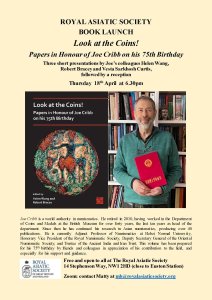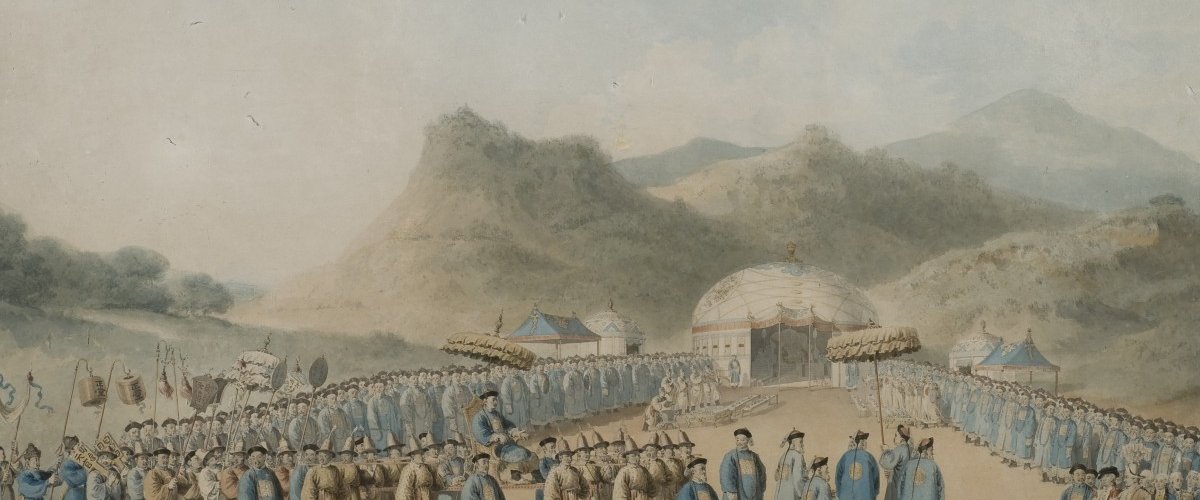Sir George Leonard Staunton and William Alexander
Sir George Leonard Staunton (1737-1801) was born in Ireland, on 10th April 1737. He became a physician and diplomatist after studying medicine in France, graduating in 1758. After his return to England, he went to the West indies in 1762 where he worked as a physician and in government positions. Back in England in 1770, he married Jane Collins in 1771, before retuning to the West Indies in 1772. When Grenada was attacked by the French in 1779 Staunton took an active part in the defence but after defeat, he and his wife were among the hostages sent to Paris. During his detention in France he negotiated an exchange of prisoners which released Lord Macartney, and in 1781, when Macartney was appointed governor of Madras, Staunton accompanied him as private secretary. Through 1783 and 1784 he was involved in peace negotiations with Tipu Sultan. Staunton then returned to England with reports and diplomatic documents and in 1785 he was given his baronetcy for the work he had done. He then remained in England, without public employment until 1792,

William Alexander (1767-1816) was born in Maidstone, Kent, on 10th April 1767, the son of a coachbuilder. He was educated in Maidstone, moved to London in 1782 and enrolled at the Royal Academy in 1784. He spent most of his life as an artist but also became the assistant librarian and first keeper of prints and drawings at the British Museum in 1808. In 1810 he was commissioned to make the first inventory of the Museums’ collections of prints and drawings. As an artist he mainly worked in watercolours and is known for his clearness and harmony of colour, simplicity and taste in composition, grace of outline, and delicacy of execution.
So what connects these two gentleman apart from sharing the same birthday (though 30 years apart)? Both were part of the Macartney embassy to China (1792-4). Staunton was appointed principal secretary to Lord Macartney’s embassy to China (and minister-plenipotentiary in the event of Macartney’s death). Alexander, though a relatively unknown artist was appointed as a junior draughtsman, possibly upon the recommendation of his teacher, J.C. Ibbetson who had been a draughtsman to Colonel Charles Cathcart on the first British embassy to Peking (Beijing). Staunton’s son, George Thomas, a founder member of the Royal Asiatic Society, was also on the embassy serving as a page to Macartney. Though only 12 years old he was the only one who attempted to learn Chinese. The embassy was politically unsuccessful but George Leonard Staunton made copious notes and collect botanical specimens while William Alexander created many drawings and sketches of the landscape and Chinese costume. On returning home, Staunton, by then an old man, suffered a stroke and, after a lingering illness, died on 14 January 1801.
Alexander, meanwhile, spent his time working up the sketches and drawings he had made in China. His drawings were engraved for the official report, but he also created his own publications includeing Views of the headlands, islands, etc., taken during a voyage to, and along the eastern coast of China, in the years 1792 & 1793 (1798), and his designs were used for the aquatints in John Barrow’s A Voyage to Cochin China, in the Years 1792, and 1793 (1806). He created paintings to exhibit at the Royal Academy including The Emperor of China’s Garden, the Imperial Palace, Pekin (1793; V&A) and The Pagoda of Lin-ching-shih, Peking (exh. RA, 1796; priv. coll.).
In 1856, George Thomas Staunton donated one of Alexander’s watercolours to the Royal Asiatic Society. This is ‘The Approach of the Emperor of China to his Tent in Tartary to receive the British Ambassador’ (pictured above), a painting created by Alexander in 1799 measuring approximately 56 x 79 cm. Interestingly, though part of the embassy, Alexander had not been present at this particular event which took place on 14 September 1793. He relied on the detailed drawings made by Lt. William Parish. The painting is still part of our collections and hangs in our Council Room where visitors are welcome to view it.

~ ~ ~ ~ ~
In other events, yesterday (11 April) we welcomed Dr James White, Departmental Lecturer of Persian Studies at Oxford University, who spoke on his research using poetic sources to investigate the political culture in seventeenth century Yemen and Iran, revealing how the circulation of poetry and the transregional networks affected political discourse in communities that stood on the edges of the Ottoman, Safavid and Mughal empires. We want to thank Dr White for his interesting lecture and wish him every success with his future research.

Next Thursday 18th April, 6.30 pm, we celebrate the 75th birthday of Joe Cribb and the publication of Look at the Coins: Papers in Honour of Joe Cribb on his 75th birthday. Joe Cribb is an eminent numismatist specialising in Asian coinages, and in particular on coins of the Kushan Empire. He will be joined by his colleagues Helen Wang, Robert Bracey and Vesta Sarkhosh Curtis.

We hope that many of you will join us for this celebration.

